The chilly late-morning air of Dotonbori cuts through your heavy winter jacket. The smell of grilling king crab legs keeps your spirits up as you stumble through the promised land of fried Osakan cuisine. Takoyaki vendors call you to their octopus caricature decorated stalls with persuasive pitches. Huge neon signs that are famous throughout Asia remain lit through daylight hours, but do not quite have their intended multi-sensory effect. An angry-looking robotic mannequin barks at you to encourage your custom. You opt for the busy, but narrow kushi-katsu place that has renown all over Japan. You dip some volcanic, battered and fried items on sticks into a sticky-sweet sauce and then thrust them into your hungry maw, being careful not to double-dip and incur the wrath of the chefs. Stomach filled, you travel south to the first Buddhist and oldest state-established temple in Japan; Shitenno-ji.
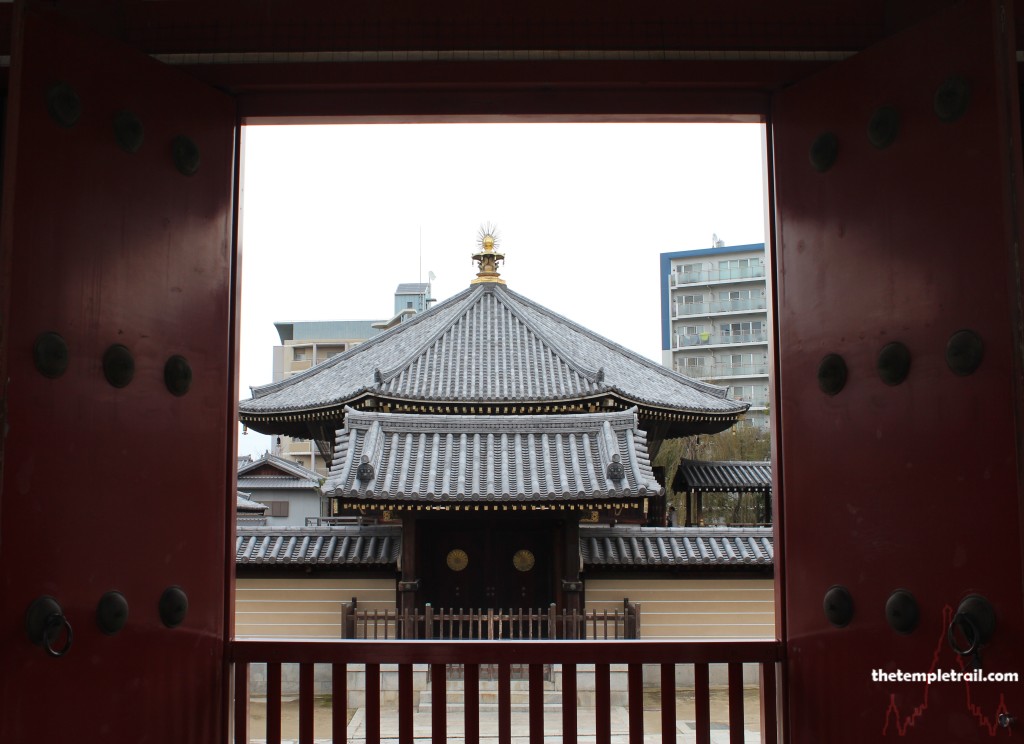
Founded in 593 during the Asuka Period by the great temple builder, Prince Shōtoku Taishi, the temple has been damaged and rebuilt many times throughout its millennium and a half in existence. The current buildings mostly date from the 1960s. The Shitenno are the four heavenly kings and the ji (Buddhist temple) is dedicated to them. Six years before the founding of the temple, the teenage prince and his father-in-law, Soga no Umako, fought a battle against the anti-Buddhist Mononobe no Moriya. The prince prayed to the Shitenno for victory and made an oath to build a temple dedicated to them. The Soga Clan prevailed against the Mononobe Clan, and the temple you see down the street from where you now stand is the result of that oath.
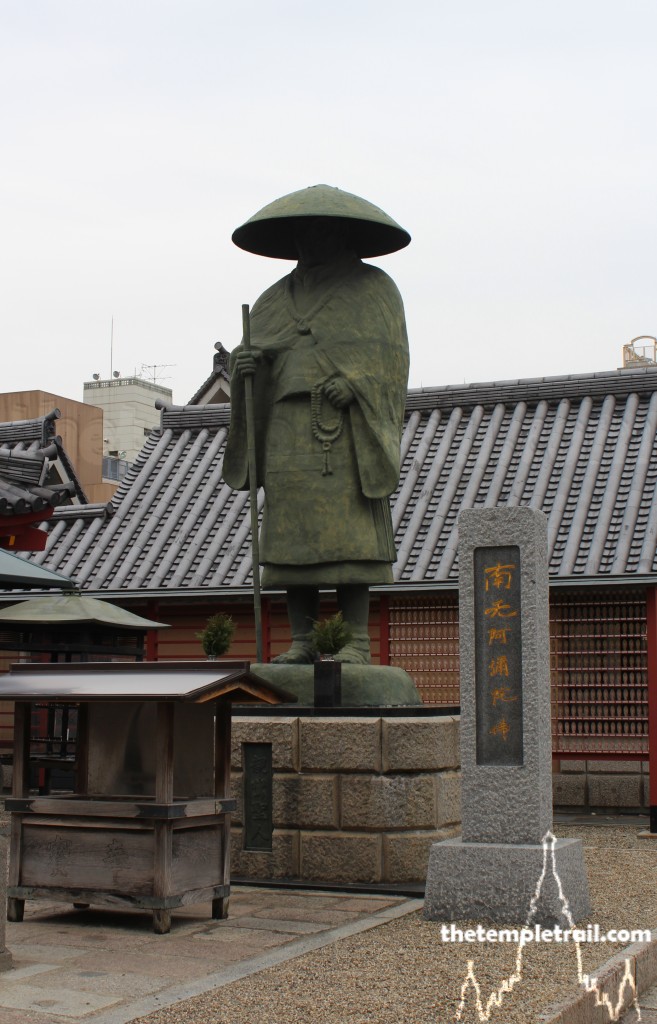
The Eirei-do (Light for Prayer and Peace) Prayer Hall at the back of the temple complex has stone inscriptions that tell of Prince Shōtoku meeting a sage called Nichira, who declared the prince to be a reincarnation of Guze-Kanzeon (Kannon or Avalokiteśvara). The inscriptions also claim he was the founder of Japanese Buddhism. Buddhism had actually made landfall via the Silk Road, but was not widespread or popular. There was an early transmission of the faith in the mid-5th century, when five monks from Gandhara arrived by way of China. The real change came when King Seong of Baekje (one of the three kingdoms of Korea), sent a mission to the Japanese city of Nara. Seong had instated Buddhism as the state religion in Baekje and was keen to spread it to neighbouring kingdoms. Prince Shōtoku engaged the services of three carpenters from Baekje to build the temple. One of the carpenters went on to found Kongō Gumi Construction Company. Until its liquidation in 2006, it was the oldest independent company in the world with a 1400 year history.
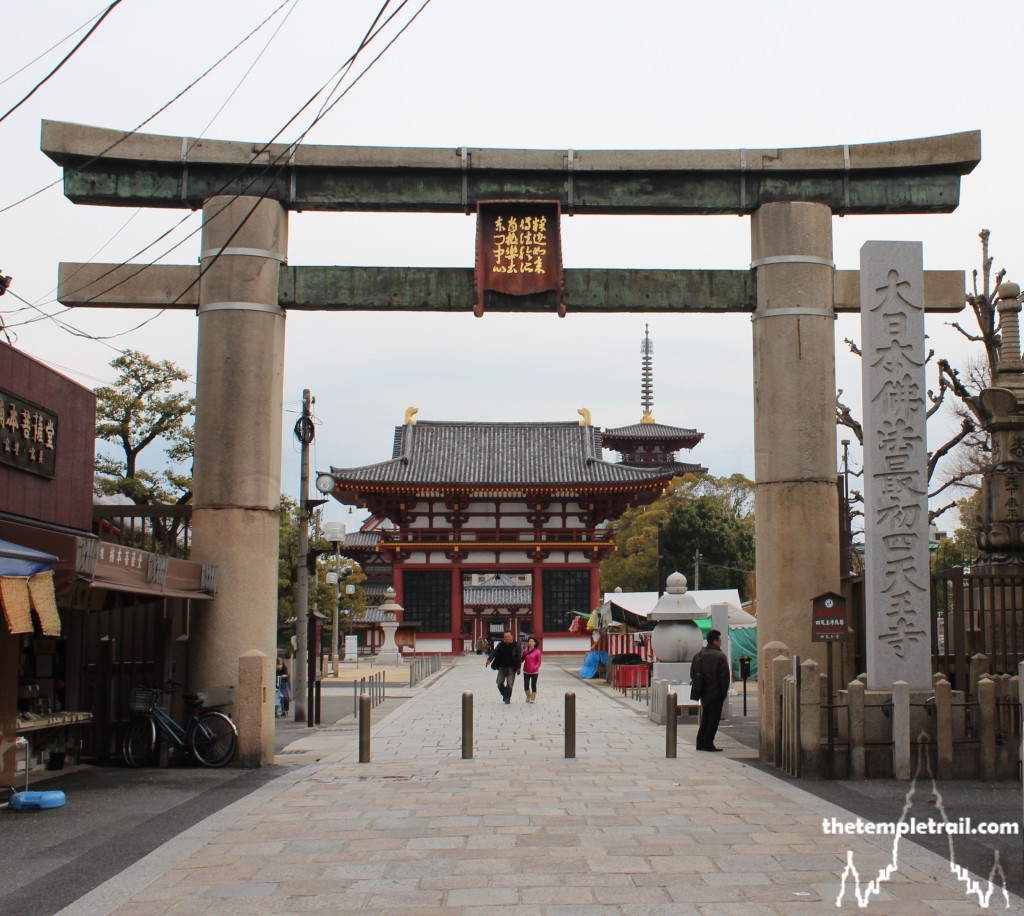
Approaching the western entrance of the temple, you come first to the Ishi-no-torii (stone gateway). The torii, a Shinto influence, was constructed in the Kamakura Period (1192 -1333). A priest called Ninsho arranged for it to be built as a symbol of the people’s faith. Looking up to the centre of the torii, you see a plaque that reads ‘this is where the Buddha preached and this archway is the East Gate of Paradise’. The passage is actually referring not to this torii, but to the large entrance gate that lies ahead of you. Passing stone lanterns that on the evening of a festival would hold flames that would illuminate the area, you transit to the larger gate. A statue of a monk watches your progress through this important part of the temple.
You stand in front of the Saidaimon (Great West Gate). In the centre of the beautifully gabled structure, a brazier holds smoking incense sticks. Being unfamiliar with Genji-kô (the incense identifying game), you are unable to guess the providence of the joss-sticks. The gate is also called the Gokurakumon (Gate of Paradise), linking to the plaque on the torii. The gate is held in local belief to be the Eastern gate to gokuraku-jōdo (Buddhist Pure-land Western Paradise), so the area between the gate and the torii attracts devotees keen to be reborn there. The lanterns are lit during the Nissokan ceremony at the spring and autumn equinoxes. People pray to the setting sun in a rite that pre-dates Buddhism, but has become linked to the Pure-land. In front of the gate, a stone monument states that Buddhism arrived here for the first time in Japan. The claim yet again fuels the mythos of Prince Shōtoku. Passing through the gate and out of the Western Paradise, you walk by two prayer wheels that you turn for blessings.
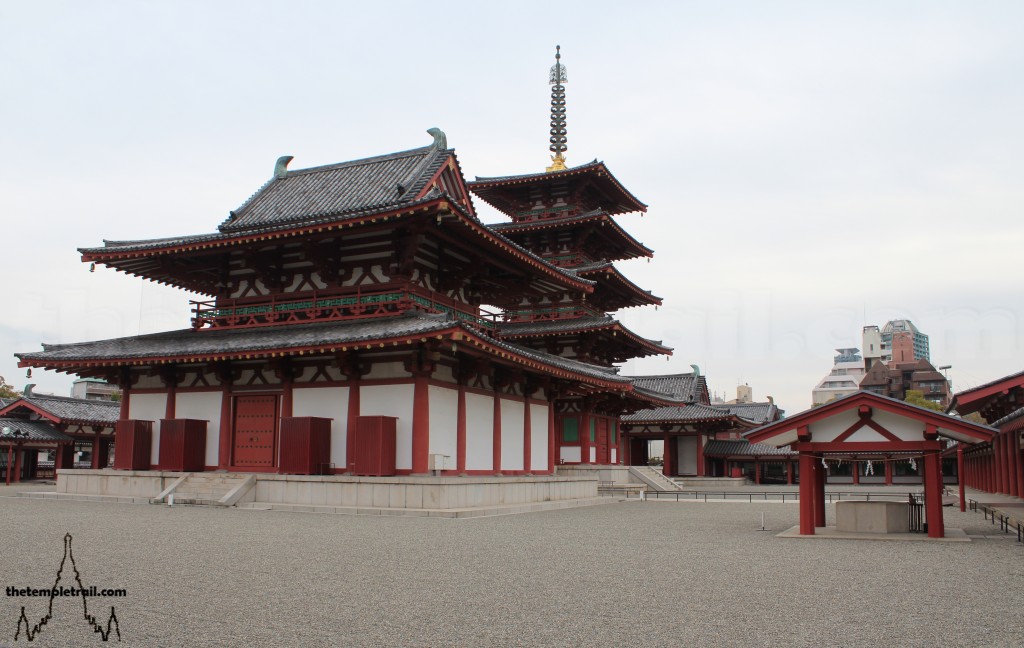
Ahead of you lies the main area of worship. The garan (central temple precinct) consists of the chumon (or niomon) gate building, a five-storey pagoda, the kon-dō (Golden Hall – main worship hall) and the kodo (lecture and assembly hall) in a south to north alignment. These buildings are framed by cloisters that totally enclose the garan. Being the oldest Buddhist temple in Japan, this is the oldest style. All temples that emulate it are called Shitennoji-shiki-garan-style temples. It was modelled after Chinese and Korean temples and all other Asuka Period temples are the same. The temple not only showed the status of Japan to outsiders who entered the country from the nearby trade hub of Osaka Bay, but was also founded to help poor people. The temple featured ground-breaking free welfare facilities like a Seiyaku-in (pharmaceutical dispensary), a Ryōbyō-in (hospital), a Kyōden-in (school), a Hiden-in (welfare institute) and free lodgings for the poor, sick, elderly and families with children. The temple remains popular with the people to this day and is a beacon for the care of the less fortunate.
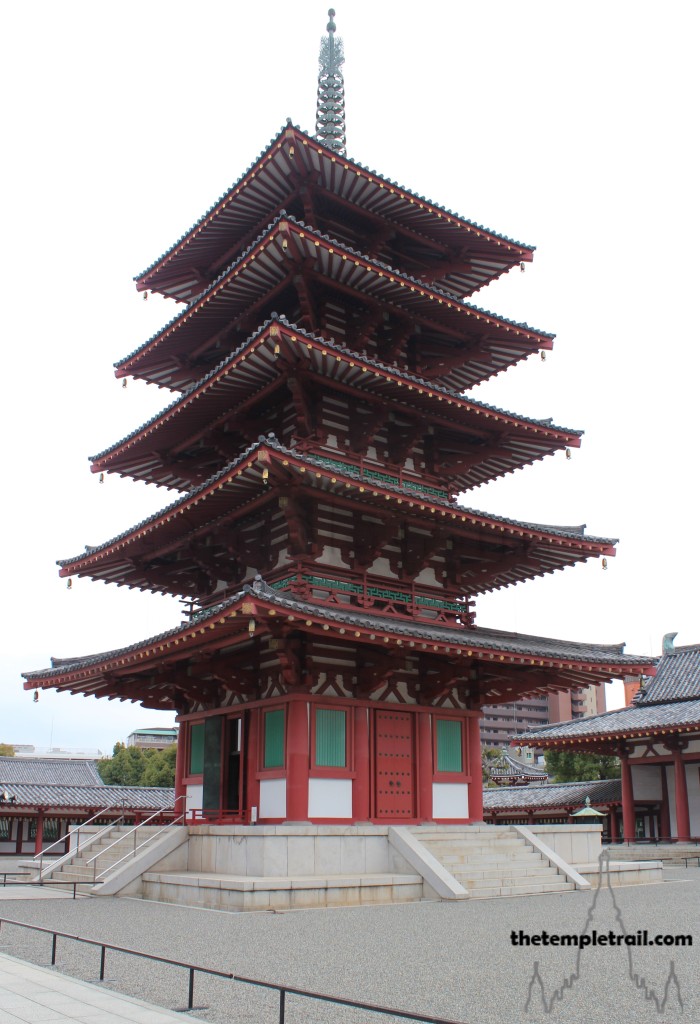
Entering into the garan, you head for the goju-no-to (Five-storey Pagoda). At 51.5 metres high, it sticks out like a barb from the precinct. The tower, while beautiful, is a reinforced ferroconcrete reconstruction from 1959. Entering the building and removing your shoes, you negotiate the stairs that ascend the pagoda next to the central pillar. The column enshrines relics that are claimed to be from the historical Buddha. The top does not give you a view, but the windowless rooms are filled with Buddha and Bodhisattva statues. After your descent, you exit and walk directly north to the kon-dō. Also a reconstruction, it dates from 1961. The moodily lit hall houses a central statue of Prince Shōtoku as Guze-Kanzeon, to whom the temple is dedicated. The main focus of worship at Shitenno-ji is Kannon, probably due to the belief that the prince was an incarnation of the Bodhisattva. Surrounding him are his beloved four heavenly kings. The walls are eye-catching and you find yourself hypnotised by the beautiful and unique frescoes painted by famed artist Nakamura Gakuryo.
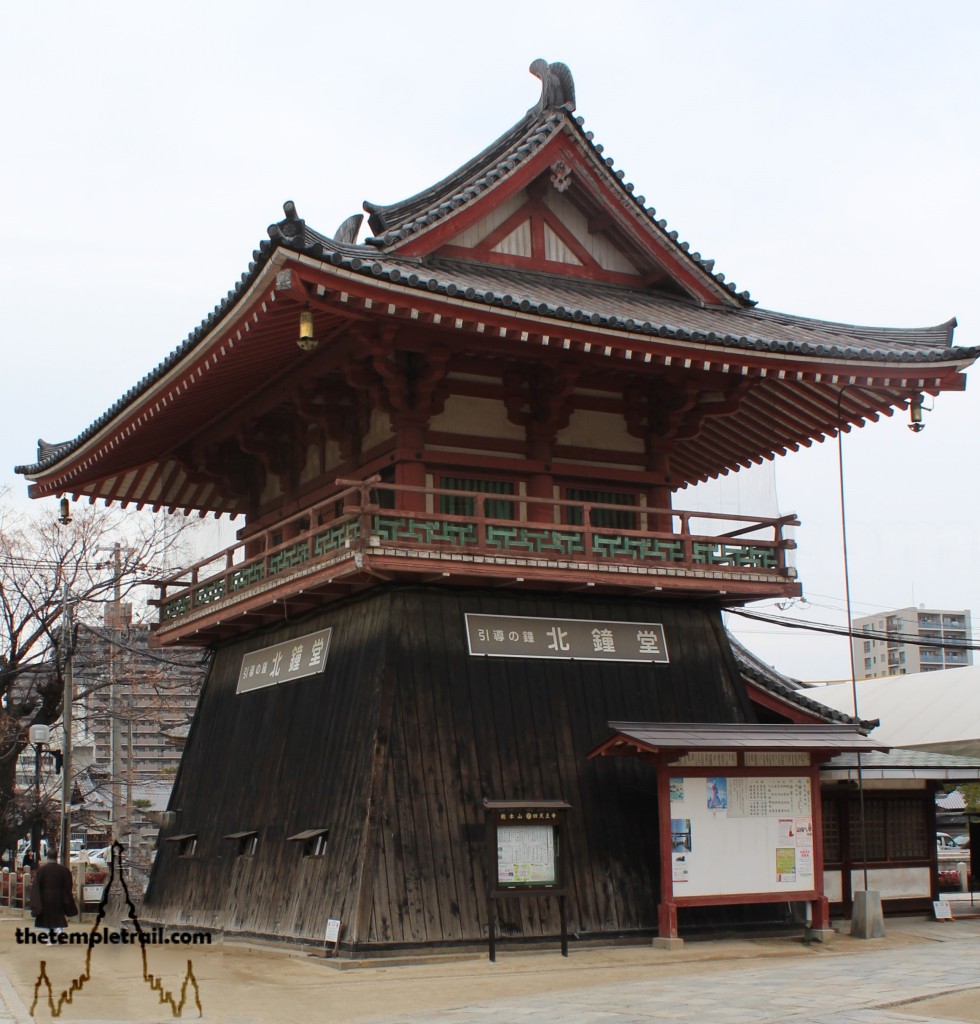
Your last stop in the garan is the kōdō. The original version of the lecture hall is where Prince Shōtoku preached in the 6th century. The building houses a statue of Amida Nyorai (Amitābha), the Buddha of the Western Pure-land that the locals feel such an affinity for and an 11-headed Kannon. After gaining the blessings of these two important beings, you leave the garan and head north. Your travels take you past the northern temple bell tower and its flared base of wood. You turn the corner and pass an omamori (amulet) stall where you peruse the magical totems on offer. Directly opposite the stall, across a pond is the Rokuji-do (Six o’clock Praise Chapel).
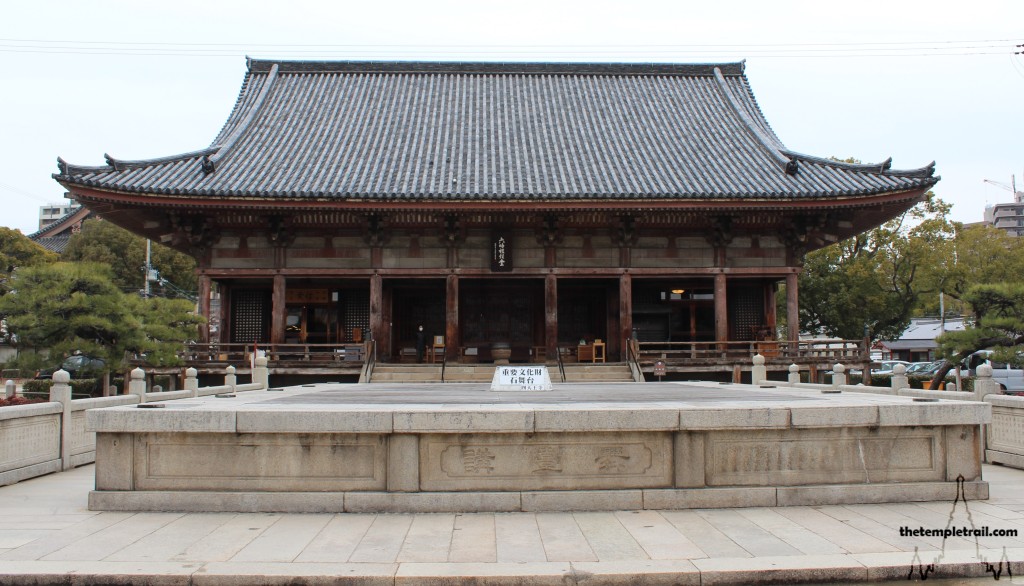
You walk towards the beautiful dark edifice and cross the kame-no-ike (Turtle pond). The pond is home to sacred turtles that slumber on the rocks and at the edges of the water. In the middle of the bridge is a large stone platform that is the setting for the Shoryo-E ceremony every 22nd of April. The ceremony honours the passing of Prince Shōtoku. This, along with a statue of Binzuru (Pindola Bharadvaja, the Arhat of health) in its right-hand corner, indicates to you that the Rokuji-do is a charnel house for people to pray for the souls of the dead. The hall is dedicated, fittingly, to Yakushi Nyorai (Bhaiṣajyaguru, the Medicine Buddha). It is one of only two older structures in the compound. It dates from the early Edo Period and is 400 years old. The only other Edo Period structure still extant at Shitenno-ji is the Ganzan Daishi-do, which honours Ryōgen, the 10th century founder of the Sōhei (warrior monk) tradition and destroyer of demons.
The Rokuji-do was founded by the priest Daishi Saicho (founder of the Tendai Sect). The moody building that is sheltering you in its eaves is modelled on the Enryaku-ji complex on Mount Hiei, the headquarters of the Tendai sect. Shitenno-ji was a Tendai temple for a long period of its history, but after the Second World War it became non-denominational and open to all sects. It is often described as being a Wa-shū temple. Wa is the oldest known name of Japan and shū means school, so it means it is Japanese-Buddhist.
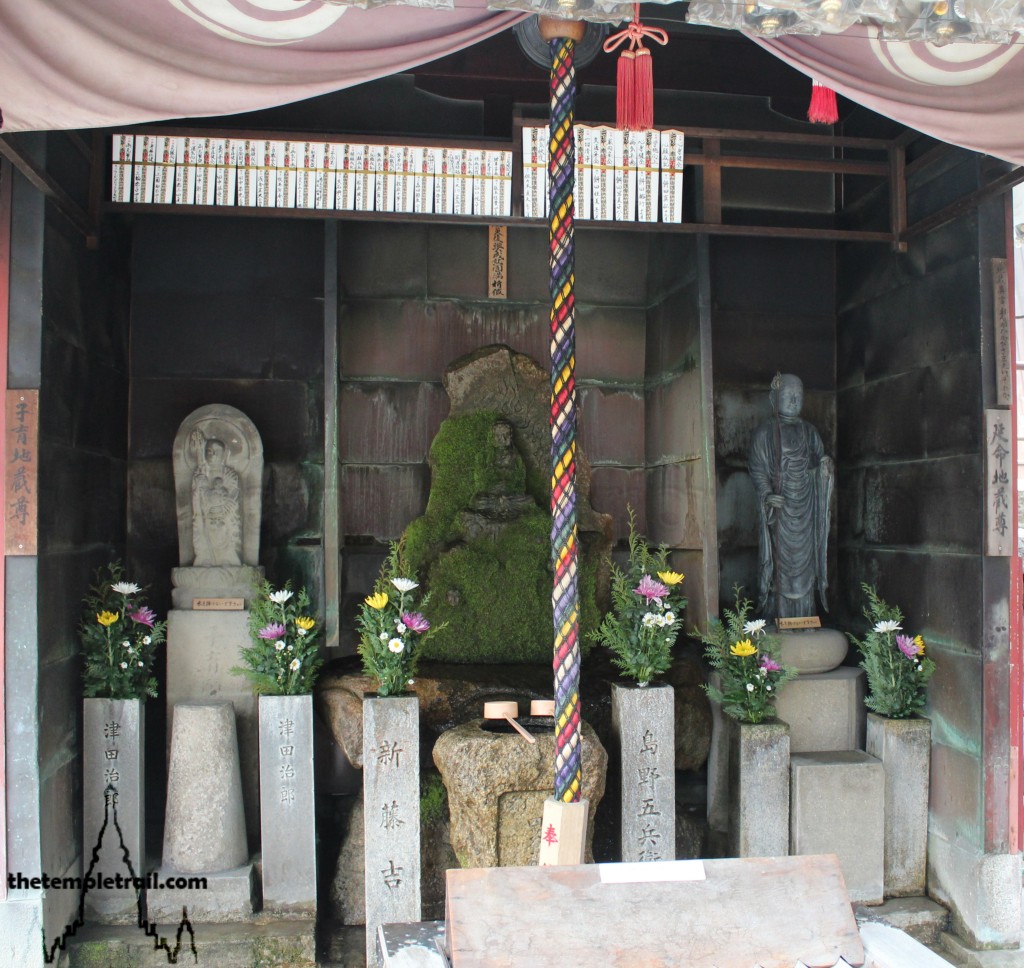
Bypassing the garden in the northeastern corner, which represents the Pure-land, you head back south along the western side of the garan. Going through a gate with shrines, you stop at one special shrine. The stone image to your right after the gate is Fudo (Acala), one of the five Esoteric Buddhist Wisdom Kings. As Acala is revered in the Nichiren, Shingon, Zen and Tendai sects, you can see the temple’s link to the once dominant Tendai School. In front of the shrine is a pool of water and you splash water on the moss covered image and his companions. You then move on with the protection of the fearsome and powerful ‘Immovable One’.
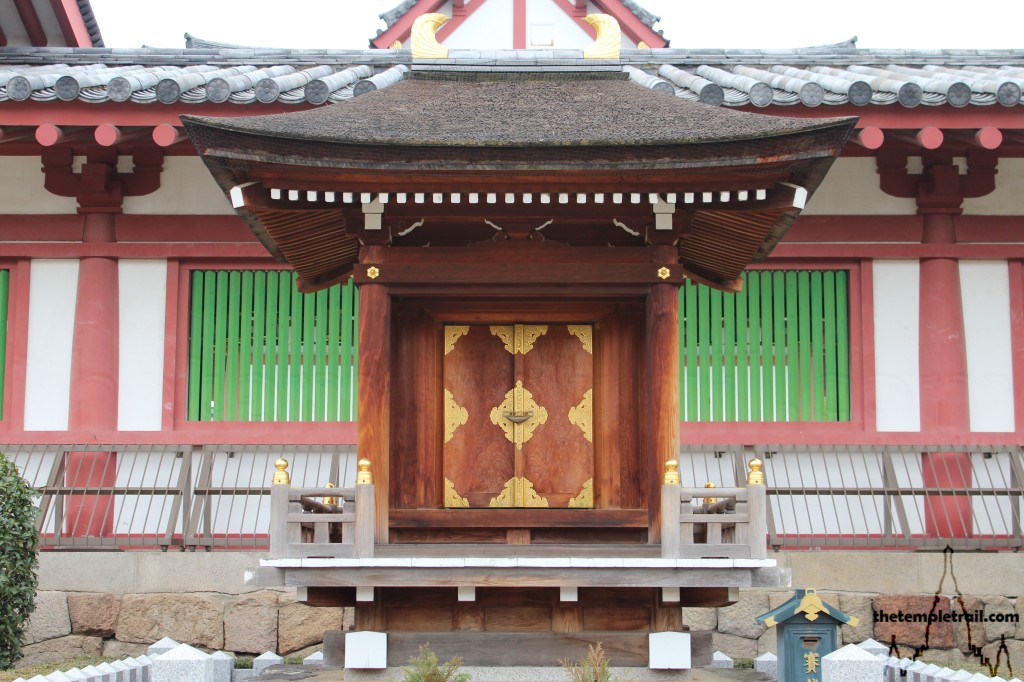
Your walk also takes you past a Shinto shrine that is small, yet stands out from the Buddhist structures. The path intersects to make a crossroad at the outside corner of the garan. Ahead of you the southern bell tower sits across from the Taishi-den. This ancestral shrine to Prince Shōtoku Taishi is dark, simple and different from the rest of the complex. Leaving the shrine, you pass along the southern pathway of the temple. To the south is the Nandaimon (great south gate) and to your right is the Chu-mon (middle gate). This gate is important as it is the southern gate of the garan and is guarded by two Nio (fearsome deva kings). Also known as the Nio-mon, the giant muscular primordial gods stare down at you from either side of the portal.

Leaving the complex by the torii, you head first to Amerikamura, a fashionable area of the city and then back to the neon wonderland of Dotonbori to try some of the takoyaki that are so ubiquitous on Osaka. The paradox of old and new plays through your mind and as you sink your teeth into the hot, sumptuous octopus dumplings, you think of the less gluttonous side to Osaka. The poor who were looked after by the prince so many years ago are still here, as poverty has not been totally eradicated, but in the city that doesn’t stop eating, it is hard to think of anyone going hungry.
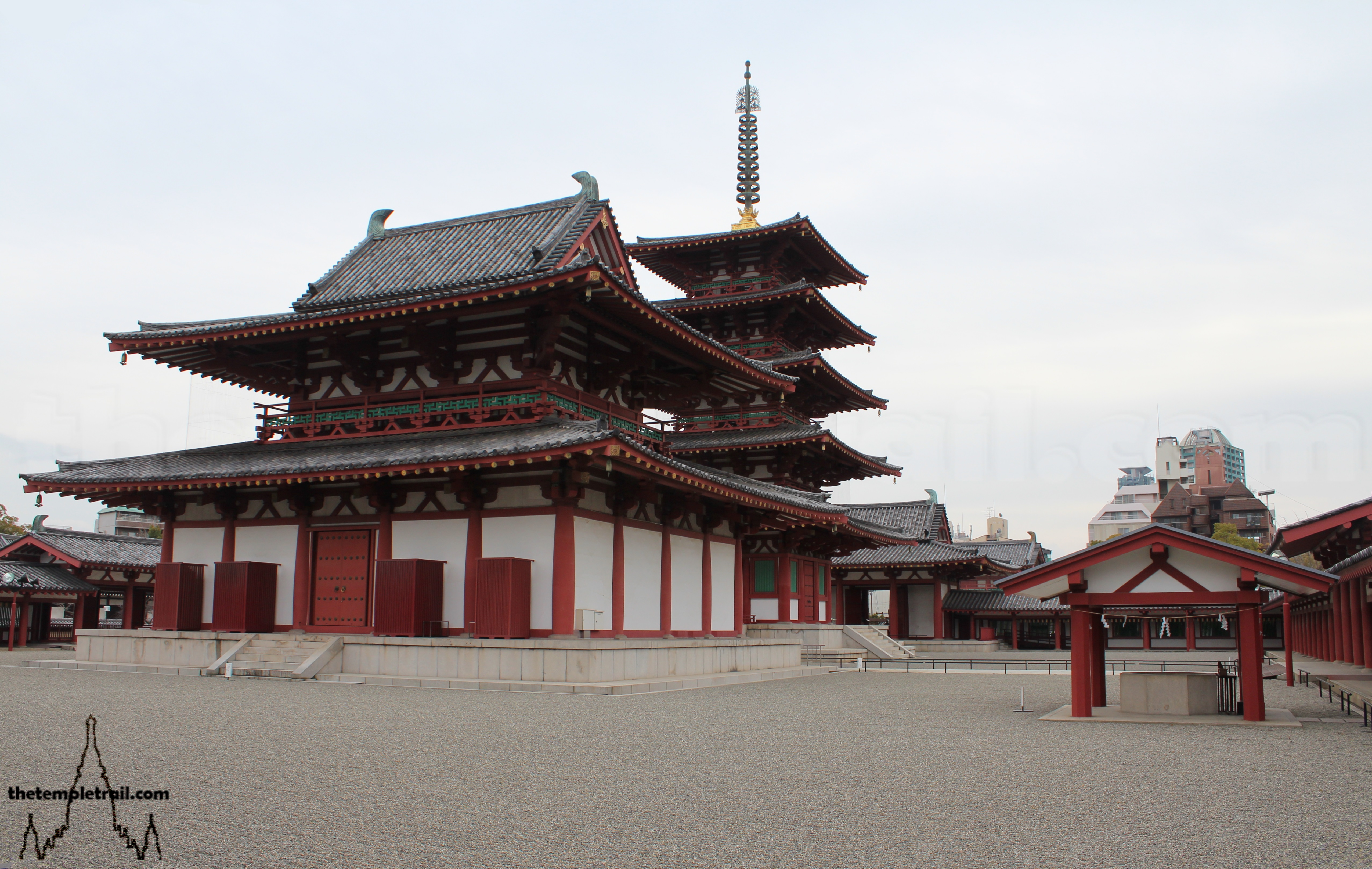
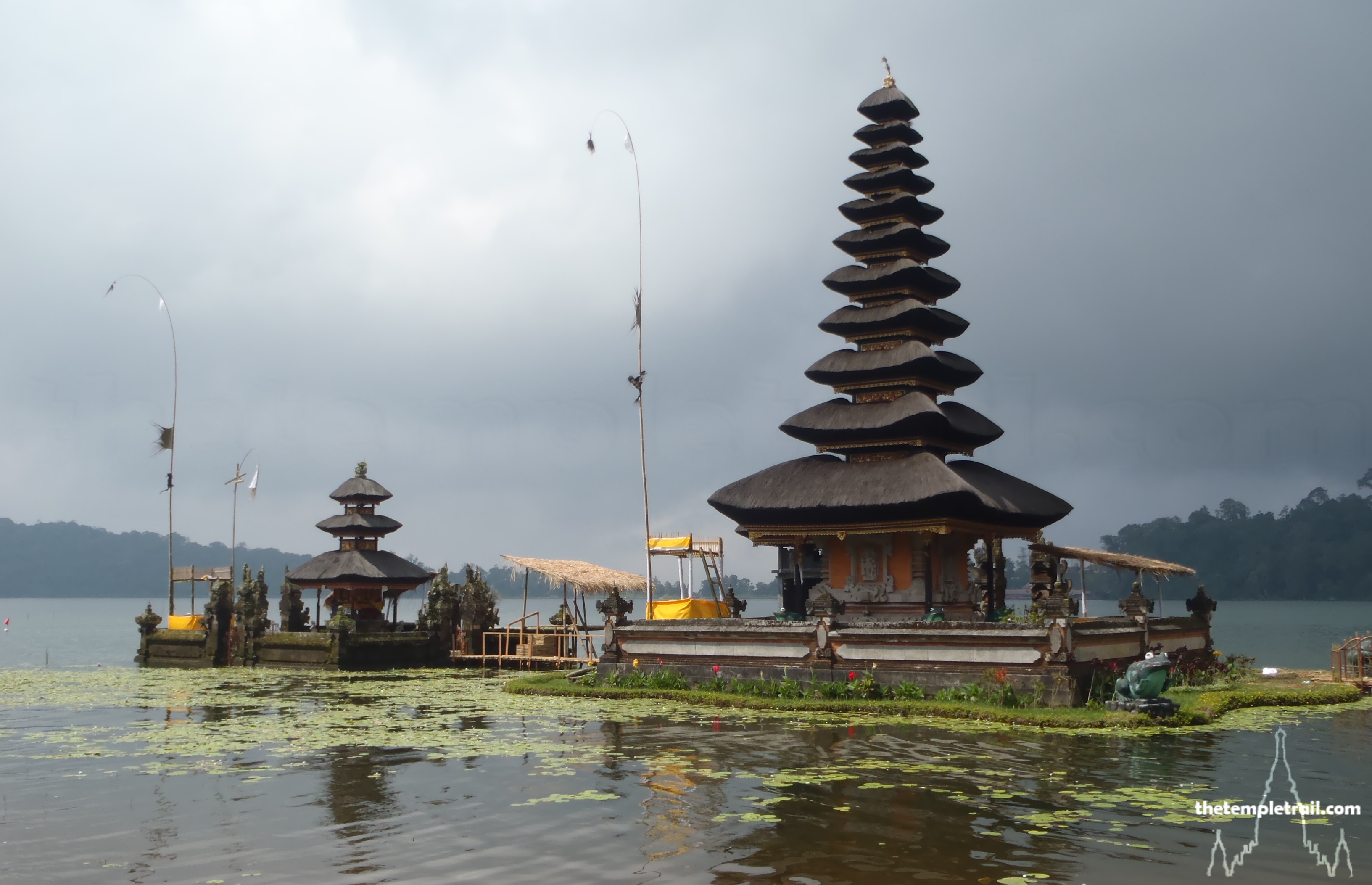 Pura Ulun Danu Bratan
Pura Ulun Danu Bratan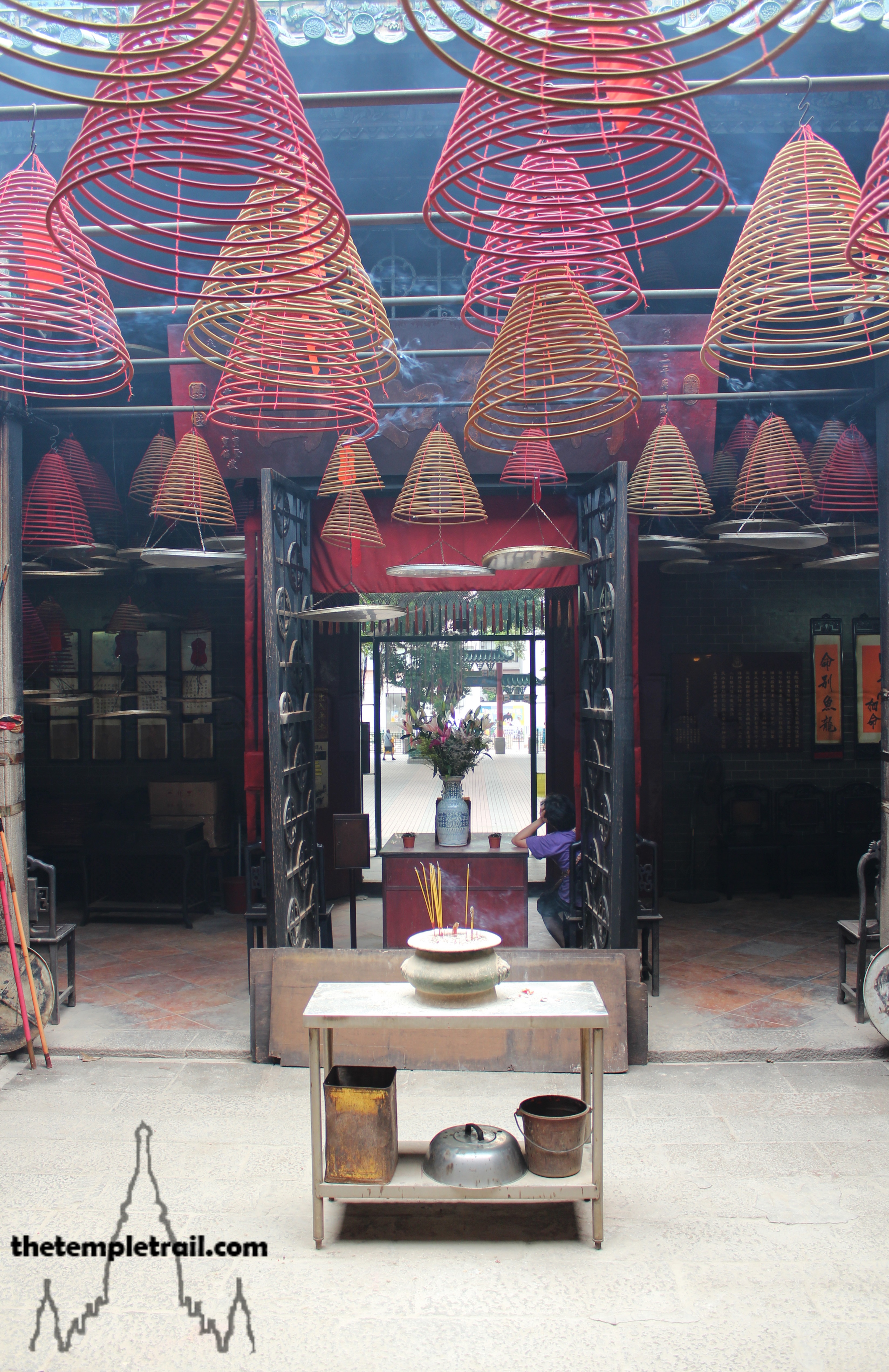
[…] we were staying, we were not far from a large Buddhist Temple called Shitennō-ji. We were fortunate enough that on the day we visited there was a massive market where people were […]